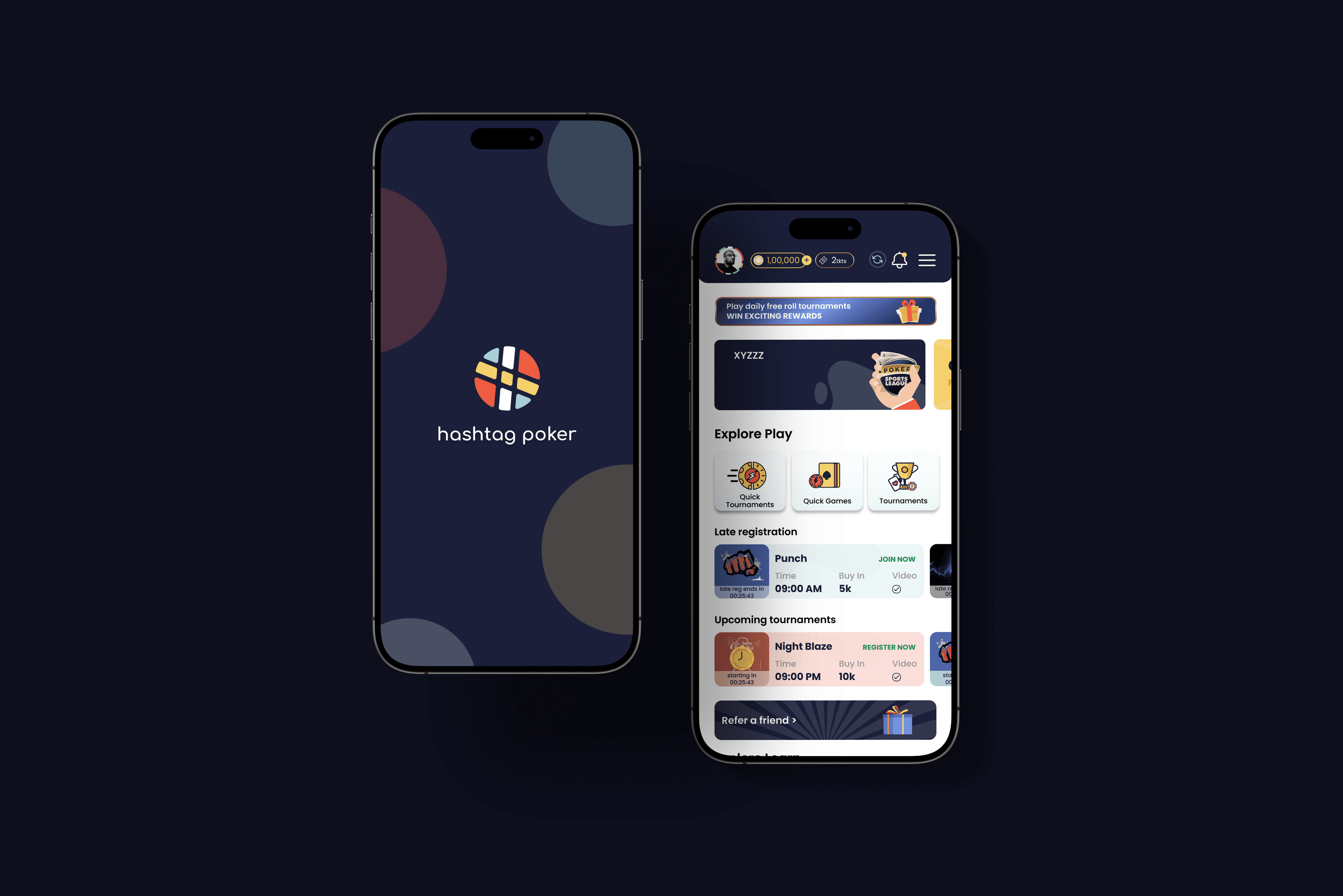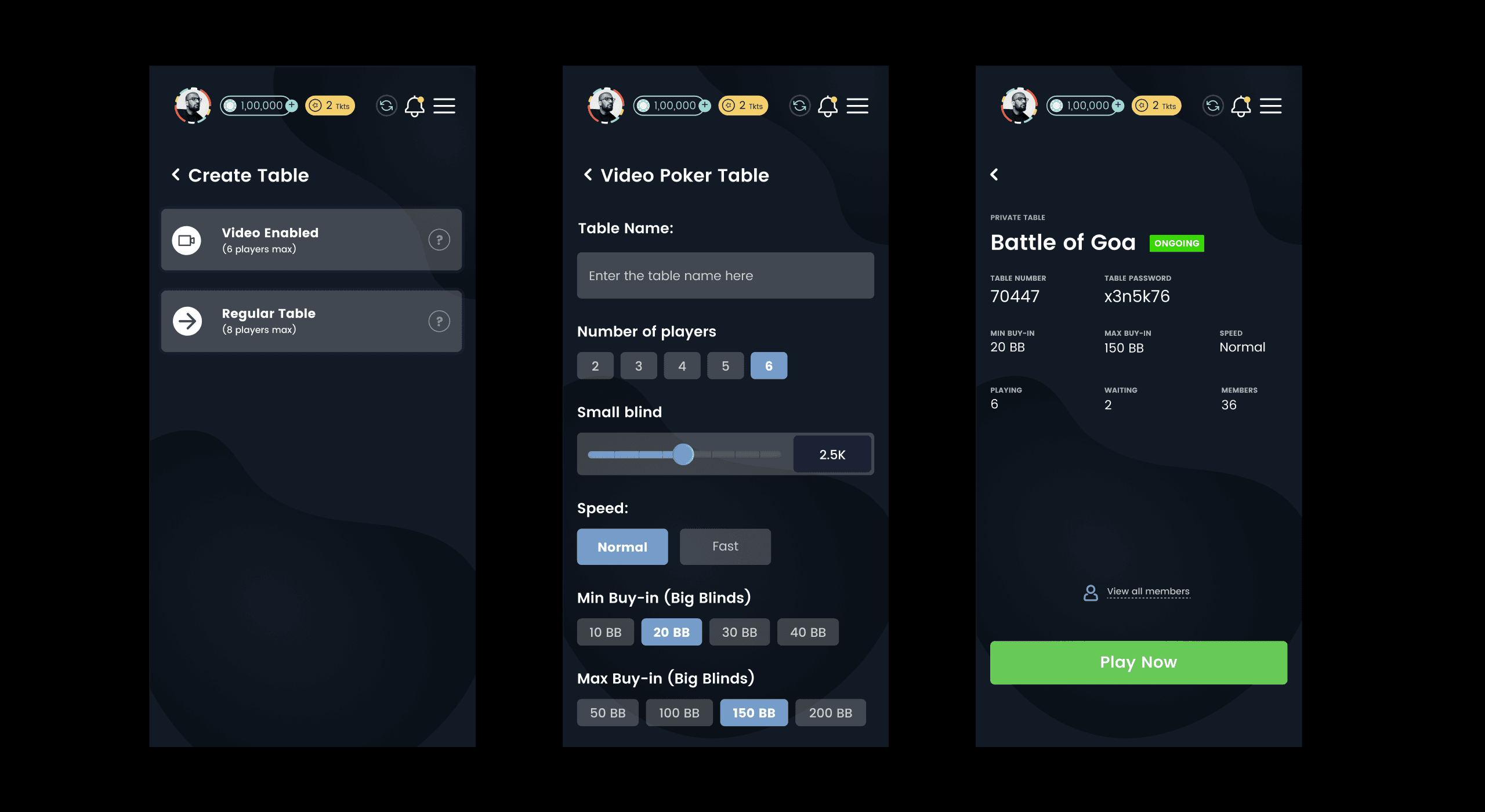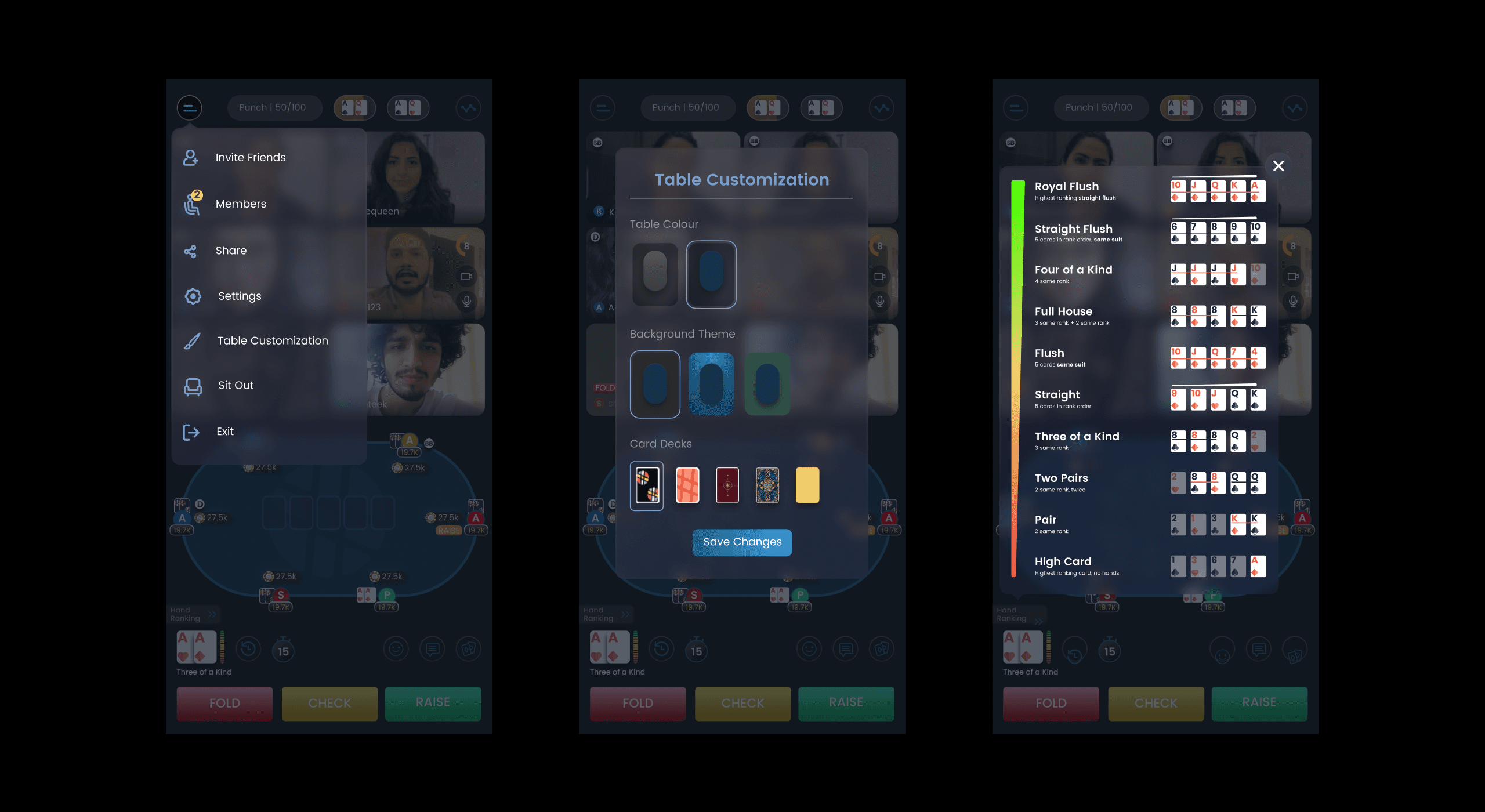


Process
The aim of the redesign was to enhance the existing private table experience, allowing users to create private rooms and invite others to join. Additionally, we sought to integrate a table view in video mode and increase the number of players in non-video table mode. We began with user research to understand how poker works and identify the most important information users need while playing. We also analyzed various top poker apps to understand their user flows and what poker players are accustomed to.
Next, we created wireframes to discuss the concepts. Once the flow was finalized, we began working on the UI, which was as complex as the UX. Our goal was to keep the design light and minimal while still capturing the true essence of a poker table.
Process
The aim of the redesign was to enhance the existing private table experience, allowing users to create private rooms and invite others to join. Additionally, we sought to integrate a table view in video mode and increase the number of players in non-video table mode. We began with user research to understand how poker works and identify the most important information users need while playing. We also analyzed various top poker apps to understand their user flows and what poker players are accustomed to.
Next, we created wireframes to discuss the concepts. Once the flow was finalized, we began working on the UI, which was as complex as the UX. Our goal was to keep the design light and minimal while still capturing the true essence of a poker table.
Process
The aim of the redesign was to enhance the existing private table experience, allowing users to create private rooms and invite others to join. Additionally, we sought to integrate a table view in video mode and increase the number of players in non-video table mode. We began with user research to understand how poker works and identify the most important information users need while playing. We also analyzed various top poker apps to understand their user flows and what poker players are accustomed to.
Next, we created wireframes to discuss the concepts. Once the flow was finalized, we began working on the UI, which was as complex as the UX. Our goal was to keep the design light and minimal while still capturing the true essence of a poker table.












Outcome
The outcome is a revamped private table experience featuring two modes: with video and without. The video format now supports a camera and table view for up to 6 players, with improved interactions for fold, raise, and call actions, making all necessary options easily accessible on the screen. In the non-video mode, the maximum number of players has been increased to 8. Additionally, the updated table design and customization options have been well-received by users, bringing a fresh breath of air to the experience. As a result, engagement in the video poker mode increased by 34%, while the non-video mode saw a 22% rise.
Outcome
The outcome is a revamped private table experience featuring two modes: with video and without. The video format now supports a camera and table view for up to 6 players, with improved interactions for fold, raise, and call actions, making all necessary options easily accessible on the screen. In the non-video mode, the maximum number of players has been increased to 8. Additionally, the updated table design and customization options have been well-received by users, bringing a fresh breath of air to the experience. As a result, engagement in the video poker mode increased by 34%, while the non-video mode saw a 22% rise.
Outcome
The outcome is a revamped private table experience featuring two modes: with video and without. The video format now supports a camera and table view for up to 6 players, with improved interactions for fold, raise, and call actions, making all necessary options easily accessible on the screen. In the non-video mode, the maximum number of players has been increased to 8. Additionally, the updated table design and customization options have been well-received by users, bringing a fresh breath of air to the experience. As a result, engagement in the video poker mode increased by 34%, while the non-video mode saw a 22% rise.